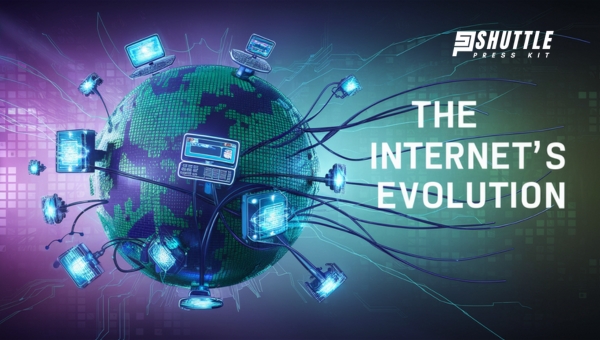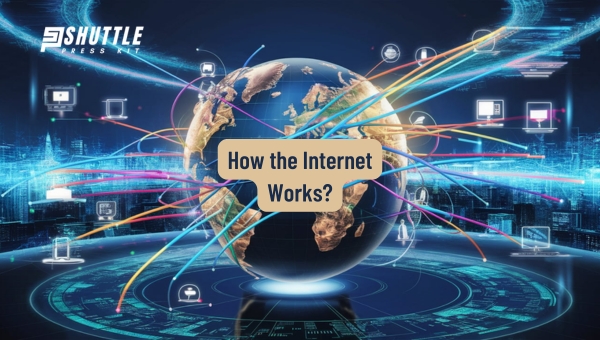Have you ever stopped to wonder what the internet really is and how it works? It might seem like magic, how we can instantly message friends, stream movies, or find answers within seconds. But I assure you, there’s an explanation behind it all. Let’s embark on this exciting journey together and uncover the mysteries of the internet.
The internet is a vast network connecting millions of computers worldwide, allowing them to communicate. At its core, it uses a set of rules called protocols that dictate how data should be transferred across this network.
Your device sends out a request for information whenever you browse a website or send an email. This request travels through various computers until it reaches its destination and the requested information is sent back to you in milliseconds.
The Internet’s Evolution
The inception of the internet can be traced back to the late 1960s, originating as a groundbreaking project under the aegis of the U.S. Department of Defense Advanced Research Projects Agency (ARPA). This pioneering work led to the development of ARPANET in 1969, marking the first iteration in what would evolve into today’s internet.

It was an ambitious attempt to enable computer networks to communicate with one another seamlessly. The evolution continued with a significant milestone in 1983 when ARPANET adopted TCP/IP standards and protocols, laying down a robust foundation for network communication and ultimately paving the way for the internet as we know it.
For over a decade, from 1981 until 1994, pivotal infrastructural components known as “the Internet’s backbone” were predominantly financed by grants from the U.S. National Science Foundation. This arrangement facilitated expansive growth and development across the board.
However, recognizing potential beyond academic and defense contexts and aiming for broader commercialization and accessibility, a strategic shift occurred in 1994 during Bill Clinton’s presidency.
The administration craftily transitioned maintenance responsibilities over to private entities signaling an end to direct government oversight on these backbones’ operations.
Since this watershed moment, private funding has become synonymous with internet infrastructure support leading into an era where digital connectivity permeates nearly every aspect of daily life globally.
Also Read: Amazon’s Project Kuiper vs Starlink: Showdown Unpacked
How the Internet Works?

Interconnected Networks
- The Internet is a worldwide network of interconnected computer networks.
- It consists of large and small networks around the globe that communicate with each other.
Data Transfer
- When data (e.g. a web page) is transferred over the Internet, it is broken into same-sized pieces called packets.
- A header is added to each packet with information like the source, destination, and order.
- The packets are sent from computer to computer until they reach their destination.
- Each computer decides where to send the packet next based on factors like network traffic.
- The packets may not all take the same route to the destination.
- At the destination, the packets are reassembled into the original data.
TCP/IP Protocol
- The TCP/IP (Transmission Control Protocol/Internet Protocol) software is responsible for sending, receiving and checking packets.
- It acts as the “glue” that holds the Internet together.
Getting an Internet Connection
- To access the Internet, a computer needs an Internet connection from an Internet Service Provider (ISP).
- Common connection types include dial-up, leased lines, broadband, and wireless.
- The ISP provides the necessary hardware and software to establish the connection.
Internet Services
- The Internet enables various services like email, file transfer, web browsing, real-time communication, and more.
- Users can access websites, databases, news, and other information from around the world.
Also Read: Starlink Volcano Mount Guide: Easy DIY Installation Tips
FAQs
What is the Internet?
The Internet is a vast network that connects computers all over the world to share information and communicate.
How does the Internet work?
Through a system of protocols like TCP/IP, data is sent and received across networks of computers, using devices like routers and switches to navigate.
Can anyone access the Internet?
Yes, anyone with a device capable of connecting to the network and permission to access it can use the Internet.
Is the Internet safe?
While the Internet offers immense knowledge and services, it has risks. Users should safeguard their information with strong passwords, antivirus software, and cautious sharing practices.
Also Read: Starlink Offer Phone Service? Discover Now!
Conclusion
The Internet, an intricate global web of interconnected networks, has profoundly transformed how we communicate, work, and seek entertainment. By enabling the exchange of data through a sophisticated system of routers, servers, and cables, it supports a vast array of services from email to streaming.
As a technological marvel, it has become an indispensable aspect of modern life, offering both vast opportunities and notable challenges. Its continued evolution presents an exciting frontier, promising innovations that could further revolutionize our digital experience.
